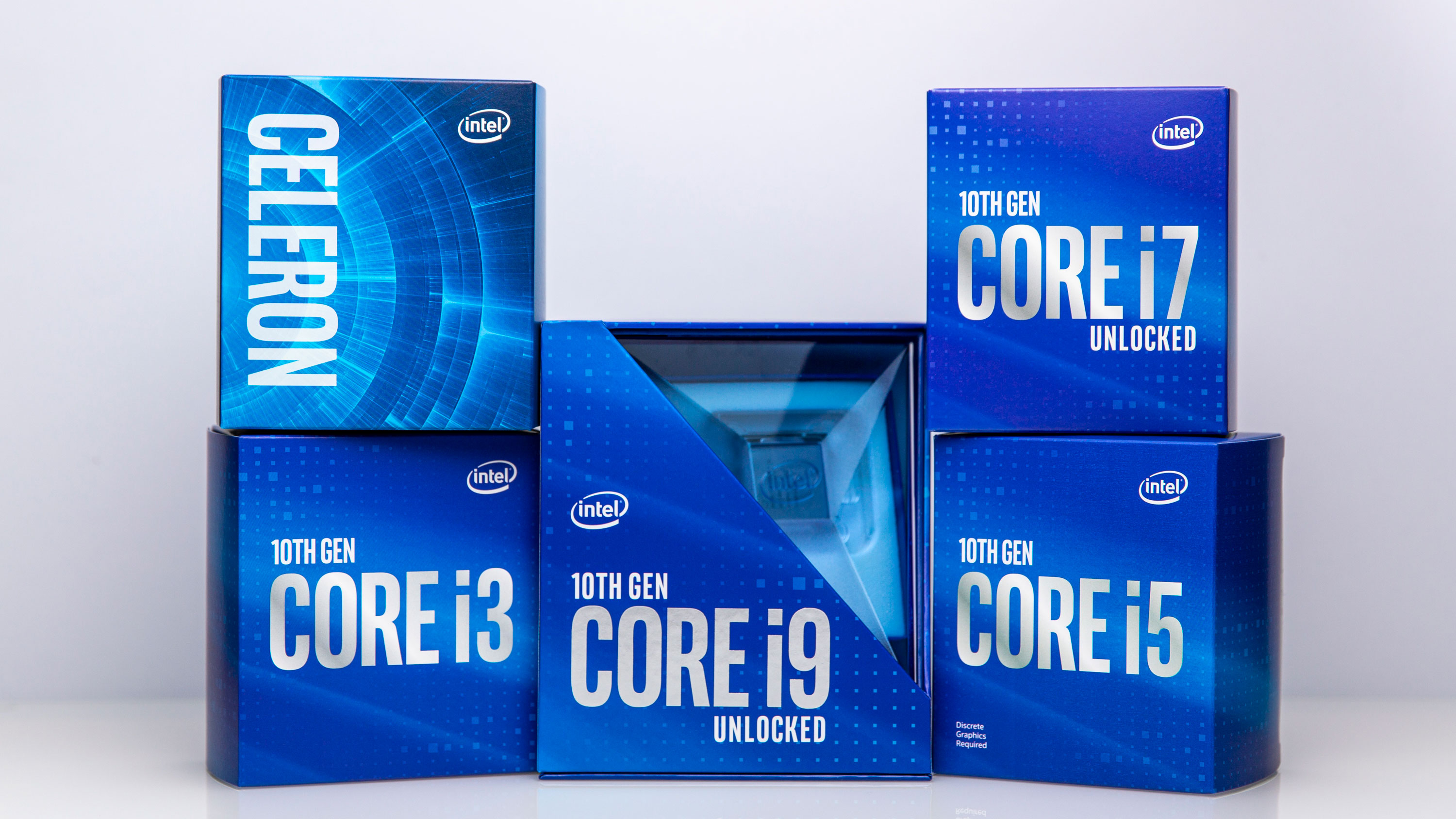Intel Reveals PL1, PL2 and Tau Values For 10th-Gen Comet Lake-S Processors

Intel has released a new revision of the datasheet for its 10th-gen Comet Lake-S processors. The June 2020 edition (PDF) details the PL1 (Power Level 1), PL2 (Power Level 2) and Tau values for the new 14nm chips, information which was not available in the previous revision.
Enthusiasts have often called out Intel for not publicly advertising the peak power consumption for its processors. The chipmaker only discloses the PL1 value, which is the processor's power draw at base clock speeds. The PL2 parameter, on the other hand, is significantly higher since it's the maximum power consumption that you can expect when the processor is pushed to the max with turbo engaged.
In all likelihood, Intel doesn't reveal the PL2 number with the objective of not confusing less experienced buyers. Labeling a processor with 250W would be bad for business, especially when the majority of consumers won't be seeing this level of power draw very frequently during normal usage. Nevertheless, it's a crucial aspect of the processor that should be exposed to the general public so the consumer can plan accordingly when putting a system together.
While we applaud Intel's transparency, it would garner more points with enthusiasts if the chipmaker listed the PL2 value on the ARK product database instead of inside some obscure document that the majority of consumers probably won't find or know of its existence.
Intel 10th Generation Comet Lake-S PL1, PL2, Tau
| Processor | PL1 (W) | PL2 (W) | Tau (Seconds) |
|---|---|---|---|
| Core i9-10900K | 125 | 250 | 56 |
| Core i7-10700K | 125 | 229 | 56 |
| Core i5-10600K | 125 | 182 | 56 |
| Core i9-10900 | 65 | 224 | 28 |
| Core i7-10700 | 65 | 224 | 28 |
| Core i5-10600, Core i5-10500, Core i5-10400 | 65 | 134 | 28 |
| Core i3-10320, Core i3-10300, Core i3-10100 | 65 | 90 | 28 |
| Pentium Gold 6500, Pentium Gold 6400, Celeron G5920, Celeron G5900 | 58 | 58 | 28 |
| Core i9-10900T | 35 | 123 | 28 |
| Core i7-10000T | 35 | 123 | 28 |
| Core i5-10000T | 35 | 92 | 28 |
| Core i3-10000T | 35 | 55 | 28 |
| Pentium Gold G6500T, Pentium Gold G6400T, Celeron 5900T | 35 | 42 | 28 |
Prior to Comet Lake-S, it was possible to determine the PL2 simply by applying a formula that multiplies the PL1 by a value of 1.25. The formula is still relevant, but the multiplier is useless now as Comet Lake-S parts don't abide by that 1.25x rule anymore. The only reliable way to find out a Comet Lake-S processor's PL2 limit is by browsing through Intel's document.
The Core i9-10900K, which is the 10-core flagship chip, has a PL2 value that's two times higher than the advertised PL1 value of 125W. The Core i7-10700K and Core i5-10600K show 1.83x and 1.46x increases in their PL2 values, respectively.
When it comes to the 65W counterparts, the multipliers vary from 1.38x to 3.45x, depending on the model of the processor. As for the T-series versions, you can see PL2 rises bewteen 1.57x to 3.51x.
Get Tom's Hardware's best news and in-depth reviews, straight to your inbox.
Intel Xeon W-1200 Series PL1, PL2, Tau
| Processor | PL1 (W) | PL2 (W) | Tau (SEconds) |
|---|---|---|---|
| Xeon W-1290P | 125 | 250 | 56 |
| Xeon W-1270P | 125 | 229 | 56 |
| Xeon W-1250P | 125 | 182 | 56 |
| Xeon W-1290 | 80 | 224 | 28 |
| Xeon W-1270 | 80 | 224 | 28 |
| Xeon W-1250 | 80 | 134 | 28 |
| Xeon W-1290T | 35 | 123 | 28 |
The Xeon 1200-series, which are workstation iterations of the Comet Lake-S processors, shows a similar pattern. The Xeon W-1290P, which is the workstation flagship, has a PL2 that's twice that of the PL1. The Xeon 1270P and Xeon 1250P's PL2 show the same level of increase as the the Core i7-10700K and Core i5-10600K.
The 80W Xeon Comet Lake chips generally rock a PL2 that's 1.68x to 2.8x times higher while the Xeon W-1290T, the only 35W chip, shows an uplift of 3.51x, the most substantial of all the Comet Lake family.

Zhiye Liu is a news editor, memory reviewer, and SSD tester at Tom’s Hardware. Although he loves everything that’s hardware, he has a soft spot for CPUs, GPUs, and RAM.
-
bit_user Oof. Yeah, this is a hard pass, for me.Reply
Right now, if I had to buy Intel, I'd stick with Coffee Lake-R. -
hdtvguy atl SO I assume Intel makes them all t the i9 10900K spec then depending on testing they bin some down to 10900 spec. Since 10900 will be more common that 10900K it is safe to assume some 10900 chips will run fine as 10900K chips. I woudl think that since even a 10900 has to run at 224W for PL2 that it should be rather safe to set P1 to 125 and leave P2 and tau alone and get near 10900K performance in a 10900 SKU. I would throw a Noctua NH-U14S on it with the second fan and I bet you are fine. My Ryzen 9 3900X with that HSF with all cores pinned at 4.1GHz for 20 min runs about 125W and never gets above 72-74C in a room that is a tad on the warm side.Reply